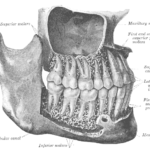
Upper posterior teeth and the maxillary sinus are closely related’ As a result after infection or dental treatment damage openings between the mouth and sinus can occur. Following extraction, the rate of oro-antral communications (OAC) is reported to be between 0.3 to 4.7%. A wide range of surgical and non-surgical techniques have been used to treat the condition.
This Cochrane review updates seeks to assess the effectiveness and safety of various interventions for the treatment of oro-antral communications and fistulae due to dental procedures.
Methods
Searches were conducted in the Cochrane Oral Health’s Trials Register, the Cochrane Central Register of Controlled Trials (CENTRAL), Medline, Embase, the US National Institutes of Health Trials Registry (ClinicalTrials.gov) and the World Health Organization International Clinical Trials Registry Platform with no restrictions on language or date.
Randomised controlled trials (RCTs) evaluating any intervention for treating oro-antral communications and oro-antral fistulae (OAF) due to dental procedures. Studies in patients with oro-antral communications, fistulae or both related to Caldwell-Luc procedure or surgical excision of tumours were excluded. Complete closure of the OACs /OAFs assessed clinically and with patient reported outcomes was the primary outcome.
Two reviewers independently selected studies, abstracted data and assessed risk of bias. Risk ratios (RR) and 95% confidence intervals were presented were presented and overall quality of the evidence was assessed using the GRADE approach.
Results
- 1 trial involving 20 participants was included.
- The trial was considered to be at unclear risk of bias.
- The trial compared pedicled buccal fat pad flap with buccal flap.
- The trial duration was two years
- No evidence of a difference between interventions for the successful (complete) closure of an oro-antral communication was seen one month after the surgery, RR=1.00 (95% Cl; 0.83 – 1.20).
- All oro-antral communications in both groups were successfully closed so there were no adverse effects due to treatment failure.
Conclusions
The authors concluded: –
We found very low quality evidence from a single small study that compared pedicled buccal fat pad and buccal flap. The evidence was insufficient to judge whether there is a difference in the effectiveness of these interventions as all oro-antral communications in the study were successfully closed by one month after surgery. Large, well-conducted RCTs investigating different interventions for the treatment of oro-antral communications and fistulae caused by dental procedures are needed to inform clinical practice.
Comments
Following a Cochrane prioritisation exercise this particular review title was chosen by the oral and maxillofacial panel as a priority. The last version of this review was published in 2016 (Dental Elf 30th May 2016). Despite an extensive literature search no new trials could be added to this review. So the need remains for large well conducted trials to find the best evidence for the management of a range of oro-antral communications.
Links
Primary Paper
Kiran Kumar Krishanappa S, Eachempati P, Kumbargere Nagraj S, Shetty NY, Moe S, Aggarwal H, Mathew RJ. Interventions for treating oro-antral communications and fistulae due to dental procedures. Cochrane Database of Systematic Reviews 2018, Issue 8. Art. No.: CD011784. DOI: 10.1002/14651858.CD011784.pub3.
Other references
Dental Elf 30th May 2016
Oro-antral communications – insufficient evidence for treatment approaches
Picture Credits
By Henry Vandyke Carter – Henry Gray (1918) Anatomy of the Human Body (See “Book” section below)Bartleby.com: Gray’s Anatomy, Plate 1003, Public Domain
